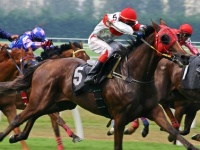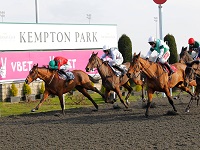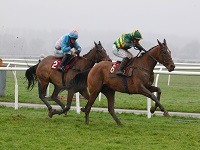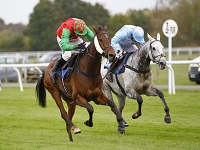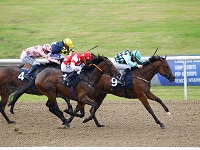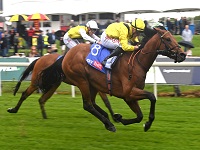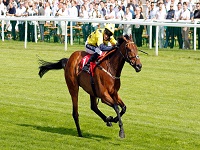Royal Ascot – race meeting or social event?
There is still hope that the 2020 meeting may yet take place, even if without the usual bustling crowd. Normally, undoubtedly, Royal Ascot is the social highlight of the summer.
It’s an opportunity for those who can afford it to dress up, enjoy delicious food and drink and to experience an event that has been around for centuries, though you don’t get to share the Royal Enclosure with the Royal family without serious connections. The Royal Enclosure is the most prestigious of the four enclosures and is where The Queen and her entourage hold court.
Table of Contents
- 1 Ascot Racecourse
- 2 Royal Ascot History
- 3 Royal Ascot – Day-by Day Programme
- 4 Draw Bias at Ascot
- 5 Our Choice of the Best Bookmakers for Royal Ascot
- 6 The Gold Cup
- 7
- 8 Recent Ascot Gold Cup Winners
- 9 Ascot Gold Cup Trends
- 10 The Two-Year-Olds
- 11 The Royal Hunt Cup
- 12 Recent Winners
- 13 Trends
- 14 Online Bookmakers for Royal Hunt Cup Betting
- 15 Wokingham Stakes
- 16 Recent Winners
- 17 Wokingham Trends
- 18 Online Bookmakers Recommended for Wokingham Stakes Betting
Entry is strictly regulated with first-time applicants needing to petition the Royal Enclosure office and be nominated by a current member. Normally, existing badge holders receive an invitation each year from Her Majesty’s Representative. Morning suits and top hats for gentlemen is compulsory and the ladies’ hats on show come from high-end fashion houses.
Ascot Racecourse
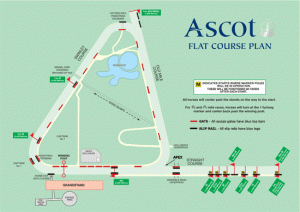
Royal Ascot History
The Ascot course is a large galloping track of 1m6f circumference with a run-in of just under 3f. Races shorter than a mile are run on the straight course, which can also accommodate races over exactly a mile.
It was a proximity to the Royal residency of Windsor Castle that led to Ascot Heath’s development as a racecourse. Queen Anne, a keen horsewoman, came across a flat clearing in 1711 while taking a carriage ride through the forest, now Windsor Great Park, near Windsor Castle. That clearing was bought for just £558, and she ordered it to be prepared for racing. On 11 August that same year, the Royal racecourse played host to its first race – Her Majesty’s Plate. However, following the death of Anne, racing at Ascot was put on hold as her successor, King George I, abhorred all types of sports.
Royal Ascot Betting at BetVictor
It was another nine years before racing resumed at Ascot but more than 100 years before Royal Ascot began to take the form which most modern racing fans would recognise. It was King George IV who initiated the first Royal drive past, which in those days meant the Royal party would have to do the whole journey en masse from Windsor Castle. Nowadays, The Queen and her guests travel only the length of the straight mile having accessed the course via the famous golden gates.
Royal Ascot – Day-by Day Programme
Tuesday
14.30 – The Queen Anne Stakes Group 1 1m
15.05 – The Coventry Stakes Group 2 6f
15.40 – The King’s Stand Stakes Group 1 5f
16.20 – The St James’s Palace Stakes Group 1 1m
17.00 – The Ascot Stakes Handicap 2m4f
17.35 – The Wolferton Rated Stakes Listed 1m 2f
Wednesday
14.30 – The Queen Mary Stakes Group 2 5f
15.05 – The Queen’s Vase Stakes Group 3 1m 6f
15.40 – The Duke Of Cambridge Stakes Group 2 1m
16.20 – The Prince Of Wales’s Stakes Group 1 1m 2f
17.00 – The Royal Hunt Cup Heritage Handicap 1m
17.35 – The Windsor Castle Stakes Listed 5f
Thursday
14.30 – The Norfolk Stakes Group 2 5f
15.05 – The Hampton Court Stakes Group 3 1m2f
15.40 – The Ribblesdale Stakes Group 2 1m4f
16.20 – The Gold Cup Group 1 2m4f
17.00 – The Britannia Stakes Heritage Handicap 1m
17.35 – The King George V Stakes Heritage Handicap 1m4f
Friday
14.30 – The Albany Stakes Odds Group 3 6f
15.05 – The King Edward VII Stakes Group 2 1m4f
15.40 – The Commonwealth Cup Group 1 6f
16.20 – The Coronation Stakes Group 1 1m
17.00 – The Sandringham Handicap Heritage Handicap 1m
17.35 – The Duke Of Edinburgh Stakes Heritage Handicap 1m4f
Saturday
14.30 – The Chesham Stakes Listed 7f
15.05 – The Jersey Stakes Group 3 1m
15.40 – The Hardwicke Stakes Group 2 1m 4f
16.20 – The Diamond Jubilee Stakes Group 1 6f
17.00 – The Wokingham Stakes Heritage Handicap 6f
17.35 – The Queen Alexandra Stakes Conditions 2m6f
Draw Bias at Ascot
Since remedial work in 2004, the draw bias on the Straight Course at Ascot has become negligible. On most occasions, granted luck in-running, the best horse simply wins in races up to a mile.
The only caveat applies when the ground is soft or heavy, in which case low numbers can have an advantage.
There is an advantage to be drawn low on the Round Course in races with 15 or more runners, though it is certainly not impossible to win from a high-numbered stall.
Our Choice of the Best Bookmakers for Royal Ascot
 Visit Bet365 |
 Visit PaddyPower |
The Gold Cup
The Gold Cup remains the showpiece event of Royal Ascot week and Ladies’ day in particular. It is still the world’s premier race for stayers, though prize money elsewhere may have moved ahead.
First run in 1807, the inaugural winner, Master Jackey, would ironically not be qualified to run nowadays. he was a three-year-old and horses must be four or older to run nowadays.
The magnificent trophy awarded to the owner of the winning horse is one of only three at the Royal meeting that are able to be kept on a permanent basis, along with those for the Royal Hunt Cup and the Queen’s Vase.
Lester Piggott rode to the Gold Cup on 11 occasions – including six wins in an eight-year spell between 1975 and 1982. While the former champion jockey is undoubtedly the King of the Gold Cup, the Queen is probably the filly Estimate.
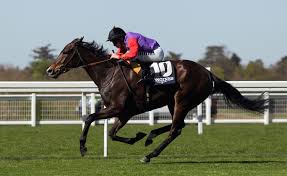
The Queen’s Gold Cup winner Estimate
She won carrying the colours of Her Majesty Queen Elizabeth in 2013. Yeats won the 2m4f Gold Cup four times in a row between 2006 and 2009 while the mighty Sagaro won it three times between 1975 and 1977. Several stayers have won it twice in the last 50 years.
Recent Ascot Gold Cup Winners
| Year | Winner | Age | Jockey | Trainer | Owner | Winning Time |
|---|---|---|---|---|---|---|
| 2019 | Stradivarius | 5 | Frankie Dettori | John Gosden | Bjorn Nielsen | 4:30.88 |
| 2018 | Stradivarius | 4 | Frankie Dettori | John Gosden | Bjorn Nielsen | 4:21.08 |
| 2017 | Big Orange | 6 | James Doyle | Michael Bell | Bill Gredley | 4:22.40 |
| 2016 | Order of St George | 4 | Ryan Moore | Aidan O’Brien | Smith / Magnier / Tabor | 4:26.21 |
| 2015 | Trip To Paris | 4 | Graham Lee | Ed Dunlop | La Grange Partnership | 4:22.61 |
| 2014 | Leading Light | 4 | Joseph O’Brien | Aidan O’Brien | Smith / Magnier / Tabor | 4:21.09 |
| 2013 | Estimate | 4 | Ryan Moore | Sir Michael Stoute | Queen Elizabeth II | 4:20.51 |
| 2012 | Colour Vision | 4 | Frankie Dettori | Saeed bin Suroor | Godolphin | 4:42.05 |
| 2011 | Fame and Glory | 5 | Jamie Spencer | Aidan O’Brien | Smith / Magnier | 4:37.51 |
| 2010 | Rite of Passage | 6 | Pat Smullen | Dermot Weld | Dr Ronan Lambe | 4:16.92 |
| 2009 | Yeats | 8 | Johnny Murtagh | Aidan O’Brien | Magnier / Nagle | 4:20.73 |
| 2008 | Yeats | 7 | Johnny Murtagh | Aidan O’Brien | Magnier / Nagle | 4:21.14 |
| 2007 | Yeats | 6 | Michael Kinane | Aidan O’Brien | Magnier / Nagle | 4:20.78 |
| 2006 | Yeats | 5 | Kieren Fallon | Aidan O’Brien | Magnier / Nagle | 4:20.45 |
| 2005 | Westerner | 6 | Olivier Peslier | Elie Lellouche | Ecurie Wildenstein | 4:19.49 |
| 2004 | Papineau | 4 | Frankie Dettori | Saeed bin Suroor | Godolphin | 4:20.90 |
| 2003 | Mr Dinos | 4 | Kieren Fallon | Paul Cole | Constantine Shiacolas | 4:20.15 |
| 2002 | Royal Rebel | 6 | Johnny Murtagh | Mark Johnston | Peter Savill | 4:25.64 |
| 2001 | Royal Rebel | 5 | Johnny Murtagh | Mark Johnston | Peter Savill | 4:18.92 |
| 2000 | Kayf Tara | 6 | Michael Kinane | Saeed bin Suroor | Godolphin | 4:24.53 |
| 1999 | Enzeli | 4 | Johnny Murtagh | John Oxx | HH Aga Khan | 4:18.85 |
| 1998 | Kayf Tara | 4 | Frankie Dettori | Saeed bin Suroor | Godolphin | 4:32.36 |
| 1997 | Celeric | 5 | Pat Eddery | David Morley | Christopher Spence | 4:26.19 |
| 1996 | Classic Cliche | 4 | Michael Kinane | Saeed bin Suroor | Godolphin | 4:23.20 |
| 1995 | Double Trigger | 4 | Jason Weaver | Mark Johnston | Ron Huggins | 4:20.25 |
| 1994 | Arcadian Heights | 6 | Michael Hills | Geoff Wragg | John Pearce | 4:27.67 |
| 1993 | Drum Taps | 7 | Frankie Dettori | Lord Huntingdon | Yoshio Asakawa | 4:32.57 |
| 1992 | Drum Taps | 6 | Frankie Dettori | Lord Huntingdon | Yoshio Asakawa | 4:18.29 |
| 1991 | Indian Queen | 6 | Walter Swinburn | Lord Huntingdon | Sir Gordon Brunton | 4:23.90 |
| 1990 | Ashal | 4 | Richard Hills | Harry Thomson Jones | Hamdan Al Maktoum | 4:28.58 |
| 1989 | Sadeem | 6 | Willie Carson | Guy Harwood | Sheikh Mohammed | 4:22.68 |
| 1988 | Sadeem | 5 | Greville Starkey | Guy Harwood | Sheikh Mohammed | 4:15.67 |
| 1987 | Paean | 4 | Steve Cauthen | Henry Cecil | Lord Howard de Walden | 4:33.26 |
| 1986 | Longboat | 5 | Willie Carson | Dick Hern | Dick Hollingsworth | 4:22.11 |
| 1985 | Gildoran | 5 | Brent Thomson | Barry Hills | Robert Sangster | 4:25.19 |
| 1984 | Gildoran | 4 | Steve Cauthen | Barry Hills | Robert Sangster | 4:18.81 |
| 1983 | Little Wolf | 5 | Willie Carson | Dick Hern | Lord Porchester | 4:24.36 |
| 1982 | Ardross | 6 | Lester Piggott | Henry Cecil | Charles St George | 4:35.24 |
| 1981 | Ardross | 5 | Lester Piggott | Henry Cecil | Charles St George | 4:51.23 |
| 1980 | Le Moss | 5 | Joe Mercer | Henry Cecil | Carlo d’Alessio | 4:28.40 |
| 1979 | Le Moss | 4 | Lester Piggott | Henry Cecil | Carlo d’Alessio | 4:25.22 |
| 1978 | Shangamuzo | 5 | Greville Starkey | Michael Stoute | Mrs E. Charles | 4:27.30 |
| 1977 | Sagaro | 6 | Lester Piggott | François Boutin | Gerry Oldham | 4:28.25 |
| 1976 | Sagaro | 5 | Lester Piggott | François Boutin | Gerry Oldham | 4:26.15 |
| 1975 | Sagaro | 4 | Lester Piggott | François Boutin | Gerry Oldham | 4:48.60 |
Ascot Gold Cup Trends
- 89 per cent of the last 18 winners had run no more than twice that season.
- 83 per cent of the last 18 winners had won over at least 2m on the Flat previously.
- 86 per cent of the last 14 winners started at 7/1 or shorter.
- Aidan O’Brien has trained the winner seven times since 2006.
There are eight Group 1 races at Royal Ascot currently and all are championship races in their own right.
The Queen Anne Stakes, the King’s Stand Stakes and the St James’s Palace Stakes are held on the opening day, the Prince Of Wales’s Stakes on the second day, the Gold Cup on the Thursday, the Coronation Stakes on the Friday and the Diamond Jubilee Stakes and Commonwealth Cup on the final day.
The Queen Anne Stakes is the meeting’s traditional curtain-raiser.
It is a one mile race for four-year-olds and older horses run on the Straight Course – it always attracts the top European milers. Sir Gordon Richards was 21 when he rode his first Queen Anne winner and 48 when he claimed his last. His total of six victories has since been matched by Frankie Dettori.
The King’s Stand Stakes, a 5f sprint for three-year-olds and upwards, was actually an accident of nature.
It was first run in 1860 as a deluge had made the course, apart from the last 5f of the Straight Course, unraceable so it replaced the 2m Royal Stand Plate and has been an ever-present since.
Overseas raiders, especially those from Australia and the USA, have traditionally done well.
The St James’s Palace Stakes completes the trio of Group 1 events on day one and is for three-year-old milers on the Round Course.
First run in 1834, it is a natural target for those who have contested the 2000 Guineas in the UK, Ireland and France.
The Prince Of Wales’s Stakes is the feature on day two.
Run over 1m2f, it first appeared in the programme in 1862 but disappeared at the outbreak of the Second World War and was absent until 2000, when the rules were changed to exclude three-year-olds.
It was often won by former Classic winners in the past but is now targeted by specialists at the distance.
The Coronation Stakes is the fillies’ version of the St James’s Palace and the same criteria applies.
It attracts the top milers of the Classic generation with the Irish and French fillies usually dominating the home team.
The Diamond Jubilee Stakes on the Saturday was established in 1868 and originally known as the Cork and Orrery Stakes. The race was upgraded to Group 1 status and renamed to mark The Queen’s Golden Jubilee in 2002, before taking on its new title of the Diamond Jubilee Stakes in 2012. It is open to four-year-olds or older horses and is run over 6f.
The Commonwealth Cup was introduced in 2015 as part of a set of changes to the programme of sprint races in Europe.
The Diamond Jubilee Stakes, run over the same 6f, was closed to three-year-olds at the same time. It is the only Group 1 race in Great Britain exclusively for three-year-olds that allows geldings to compete.
The Royal Ascot meeting was extended to five days in 2002 to mark The Queen’s Golden Jubilee. Previously, the Saturday was designated an Ascot Heath race day and wasn’t supported by Royal patronage.
The Two-Year-Olds
There are six races restricted to two-year-olds at Royal Ascot with the Coventry Stakes probably the most important. All are important indicators for the juvenile pattern races later in the season but rarely do they produce classic winners the following year as, by necessity, they usually attract early-season types who are overtaken in the autumn by later maturing colts and fillies.
The Royal Hunt Cup
The Royal Hunt Cup is one of the big betting races of Royal Ascot week.
Contested over the Straight Mile on the second day of the meeting, it is a handicap for four-year-olds and upwards worth more than £100,000 to the winner.
Recent Winners
Trends
- 94 per cent of winners since 2001 had won over at least a mile
- 86 per cent of the last 14 winners were drawn 10 or higher
- 83 per cent of winners since 2001 were aged four or five
Online Bookmakers for Royal Hunt Cup Betting
 Visit Betway |
 Visit 888 Sport |
Wokingham Stakes
The Wokingham Stakes Handicap is the last big betting race of Royal Ascot week.
Contested over the last 6f of the Straight Course, it is open to three-year-olds and upwards and has been a fixture at the meeting since 1813.
Recent Winners
| Year | Horse | Form | Age | Odds | Trainer | Jockey |
|---|---|---|---|---|---|---|
| 2019 | Cape Byron | 227-1 | 5 | 7/2 | Roger Varian | Andrea Atzeni |
| 2018 | Bacchus | 5314- | 4 | 33/1 | Brian Meehan | Jim Crowley |
| 2017 | Out Do | 7-304 | 8 | 25/1 | David O’Meara | Daniel Tudhope |
| 2016 | Outback Traveller | 40-70 | 5 | 10/1 | Robert Cowell | Martin Harley |
| 2015 | Interception | 413-2 | 5 | 10/1 | David Lanigan | George Baker |
| 2014 | Baccarat | 50-22 | 5 | 9/1 | Richard Fahey | George Chaloner3 |
| 2013 | York Glory | 56142 | 5 | 14/1 | Kevin Ryan | Jamie Spencer |
| 2012 | Dandy Boy | -5992 | 6 | 33/1 | David Marnane | Pat Dobbs |
| 2011 | Deacon Blues | 230-2 | 4 | 15/2 | James Fanshawe | Johnny Murtagh |
| 2010 | Laddies Poker Two | 1316/ | 5 | 9/2 | Jeremy Noseda | Johnny Murtagh |
| 2009 | High Standing | 22-11 | 4 | 6/1 | William Haggas | Ryan Moore |
Wokingham Trends
- All of the last 20 winners had won previously over 6f or 7f
- All of the last 20 winners had run more than four times in the current season
- 95 per cent of the last 20 winners finished in the first six in their previous start
- 90 per cent of the last 20 winners had run at least once in the previous six weeks
- 85 per cent of the last 20 winners were aged four or five
Online Bookmakers Recommended for Wokingham Stakes Betting
 Visit Coral |
 Visit Betfred |

